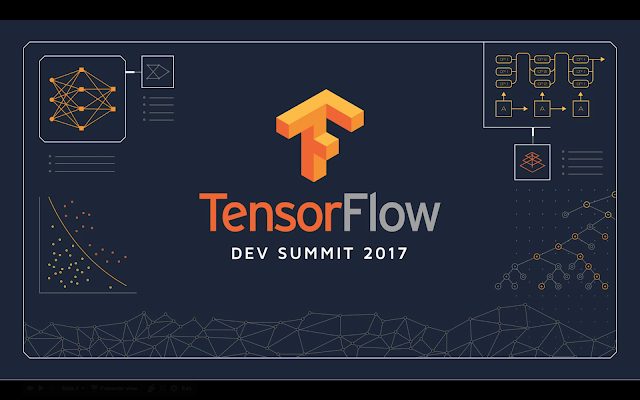
Announcing TensorFlow 1.0
February 15, 2017
Posted by Amy McDonald Sandjideh, Technical Program Manager, TensorFlow
Quick links
In just its first year, TensorFlow has helped researchers, engineers, artists, students, and many others make progress with everything from language translation to early detection of skin cancer and preventing blindness in diabetics. We’re excited to see people using TensorFlow in over 6000 open-source repositories online.
Today, as part of the first annual TensorFlow Developer Summit, hosted in Mountain View and livestreamed around the world, we’re announcing TensorFlow 1.0:
It’s faster: TensorFlow 1.0 is incredibly fast! XLA lays the groundwork for even more performance improvements in the future, and tensorflow.org now includes tips & tricks for tuning your models to achieve maximum speed. We’ll soon publish updated implementations of several popular models to show how to take full advantage of TensorFlow 1.0 - including a 7.3x speedup on 8 GPUs for Inception v3 and 58x speedup for distributed Inception v3 training on 64 GPUs!
It’s more flexible: TensorFlow 1.0 introduces a high-level API for TensorFlow, with tf.layers, tf.metrics, and tf.losses modules. We’ve also announced the inclusion of a new tf.keras module that provides full compatibility with Keras, another popular high-level neural networks library.
It’s more production-ready than ever: TensorFlow 1.0 promises Python API stability (details here), making it easier to pick up new features without worrying about breaking your existing code.
Other highlights from TensorFlow 1.0:
- Python APIs have been changed to resemble NumPy more closely. For this and other backwards-incompatible changes made to support API stability going forward, please use our handy migration guide and conversion script.
- Experimental APIs for Java and Go
- Higher-level API modules tf.layers, tf.metrics, and tf.losses - brought over from tf.contrib.learn after incorporating skflow and TF Slim
- Experimental release of XLA, a domain-specific compiler for TensorFlow graphs, that targets CPUs and GPUs. XLA is rapidly evolving - expect to see more progress in upcoming releases.
- Introduction of the TensorFlow Debugger (tfdbg), a command-line interface and API for debugging live TensorFlow programs.
- New Android demos for object detection and localization, and camera-based image stylization.
- Installation improvements: Python 3 docker images have been added, and TensorFlow’s pip packages are now PyPI compliant. This means TensorFlow can now be installed with a simple invocation of pip install tensorflow.
 |
| Click here for a link to the livestream and video playlist (individual talks will be posted online later in the day). |
Quick links
×
❮
❯


